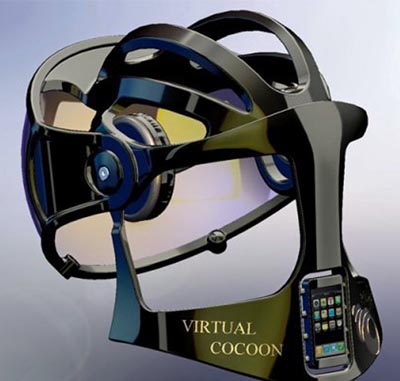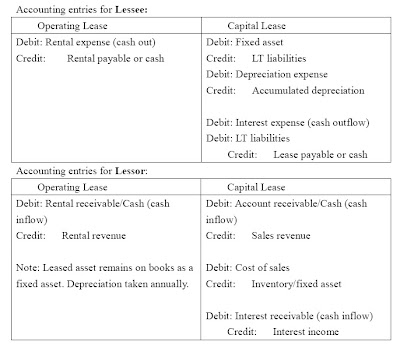Class note - 3D Virtual Reality
美國的高科技真的是世界頂端,電影裡出現的情節發生了!

我們學校的硬體設備非常優異,有這個奇怪頭盔的虛擬器
只可惜上課到一半時電池沒電...聽帶過的同學說是像走入移動的2D世界

Virtual reality (VR) is a term that applies to computer-simulated environments that can simulate places in the real world, as well as in imaginary worlds. Most current virtual reality environments are primarily visual experiences, displayed either on a computer screen or through special stereoscopic displays, but some simulations include additional sensory information, such as sound through speakers or headphones. Some advanced, haptic systems now include tactile information, generally known as force feedback, in medical and gaming applications.
Users can interact with a virtual environment or a virtual artifact (VA) either through the use of standard input devices such as a keyboard and mouse, or through multimodal devices such as a wired glove, the Polhemus, and omnidirectional treadmills. The simulated environment can be similar to the real world—for example, in simulations for pilot or combat training—or it can differ significantly from reality, such as in VR games. In practice, it is currently very difficult to create a high-fidelity virtual reality experience, due largely to technical limitations on processing power, image resolution, and communication bandwidth; however, the technology's proponents hope that such limitations will be overcome as processor, imaging, and data communication technologies become more powerful and cost-effective over time.
Researchers have just presented a concept for immersive virtual reality (VR) with the helmet ‘Virtual Cocoon’. With this futuristic device all five senses can be addressed in virtual worlds.
Do we actually need to travel to be somewhere to experience it fully? Usually we just rely on our senses to interact with the world around us. The ‘virtual cocoon’ will allow people to interact naturally with the world around us without actually travelling or being put in a particular real situation (which could potentially be dangerous).
The virtual cocoon will stimulate all five senses and hence provide a rich sensory ‘real virtuality’ experience. Special attention will be paid to the degree of naturalness perceived by the user in the virtual world
How will virtual cocoons change the world?
The virtual cocoon will revolutionise the way in which we do business by providing low-cost, high confidence, high quality multi-sensory knowledge directly to our current location.
It will significantly change, for example, purchasing via the internet because you could smell the flowers, feel the fabric of a dress, try out a sofa for comfort, examine products in any desired lighting condition and so on all before you buy them - and with the confidence that the purchasing experience is the same as if you were there in the shop examining the product using all your appropriate senses.

我們學校的硬體設備非常優異,有這個奇怪頭盔的虛擬器
只可惜上課到一半時電池沒電...聽帶過的同學說是像走入移動的2D世界

Virtual reality (VR) is a term that applies to computer-simulated environments that can simulate places in the real world, as well as in imaginary worlds. Most current virtual reality environments are primarily visual experiences, displayed either on a computer screen or through special stereoscopic displays, but some simulations include additional sensory information, such as sound through speakers or headphones. Some advanced, haptic systems now include tactile information, generally known as force feedback, in medical and gaming applications.
Users can interact with a virtual environment or a virtual artifact (VA) either through the use of standard input devices such as a keyboard and mouse, or through multimodal devices such as a wired glove, the Polhemus, and omnidirectional treadmills. The simulated environment can be similar to the real world—for example, in simulations for pilot or combat training—or it can differ significantly from reality, such as in VR games. In practice, it is currently very difficult to create a high-fidelity virtual reality experience, due largely to technical limitations on processing power, image resolution, and communication bandwidth; however, the technology's proponents hope that such limitations will be overcome as processor, imaging, and data communication technologies become more powerful and cost-effective over time.
Researchers have just presented a concept for immersive virtual reality (VR) with the helmet ‘Virtual Cocoon’. With this futuristic device all five senses can be addressed in virtual worlds.
Do we actually need to travel to be somewhere to experience it fully? Usually we just rely on our senses to interact with the world around us. The ‘virtual cocoon’ will allow people to interact naturally with the world around us without actually travelling or being put in a particular real situation (which could potentially be dangerous).
The virtual cocoon will stimulate all five senses and hence provide a rich sensory ‘real virtuality’ experience. Special attention will be paid to the degree of naturalness perceived by the user in the virtual world
How will virtual cocoons change the world?
The virtual cocoon will revolutionise the way in which we do business by providing low-cost, high confidence, high quality multi-sensory knowledge directly to our current location.
It will significantly change, for example, purchasing via the internet because you could smell the flowers, feel the fabric of a dress, try out a sofa for comfort, examine products in any desired lighting condition and so on all before you buy them - and with the confidence that the purchasing experience is the same as if you were there in the shop examining the product using all your appropriate senses.
話說太科技的世界會很安靜,
有些同學休息下課就拿起iPhone之類等產品,
到facebook上留言、查看e-mail..
成為迅速溝通的橋梁是好,不過我本人就在你前面,請直接與我對話。



Comments
而且這裡貧富差距頗大 ~ ~"